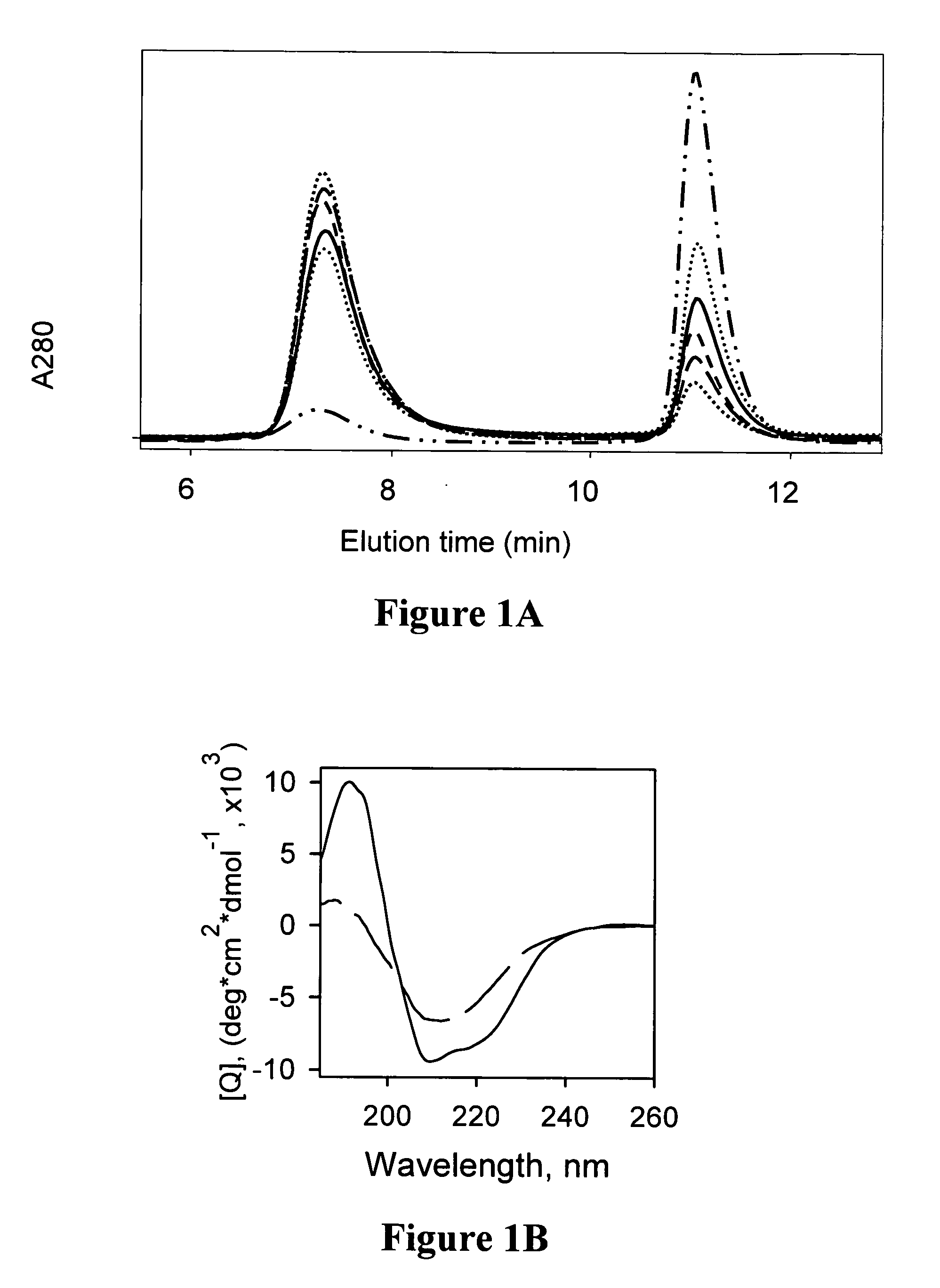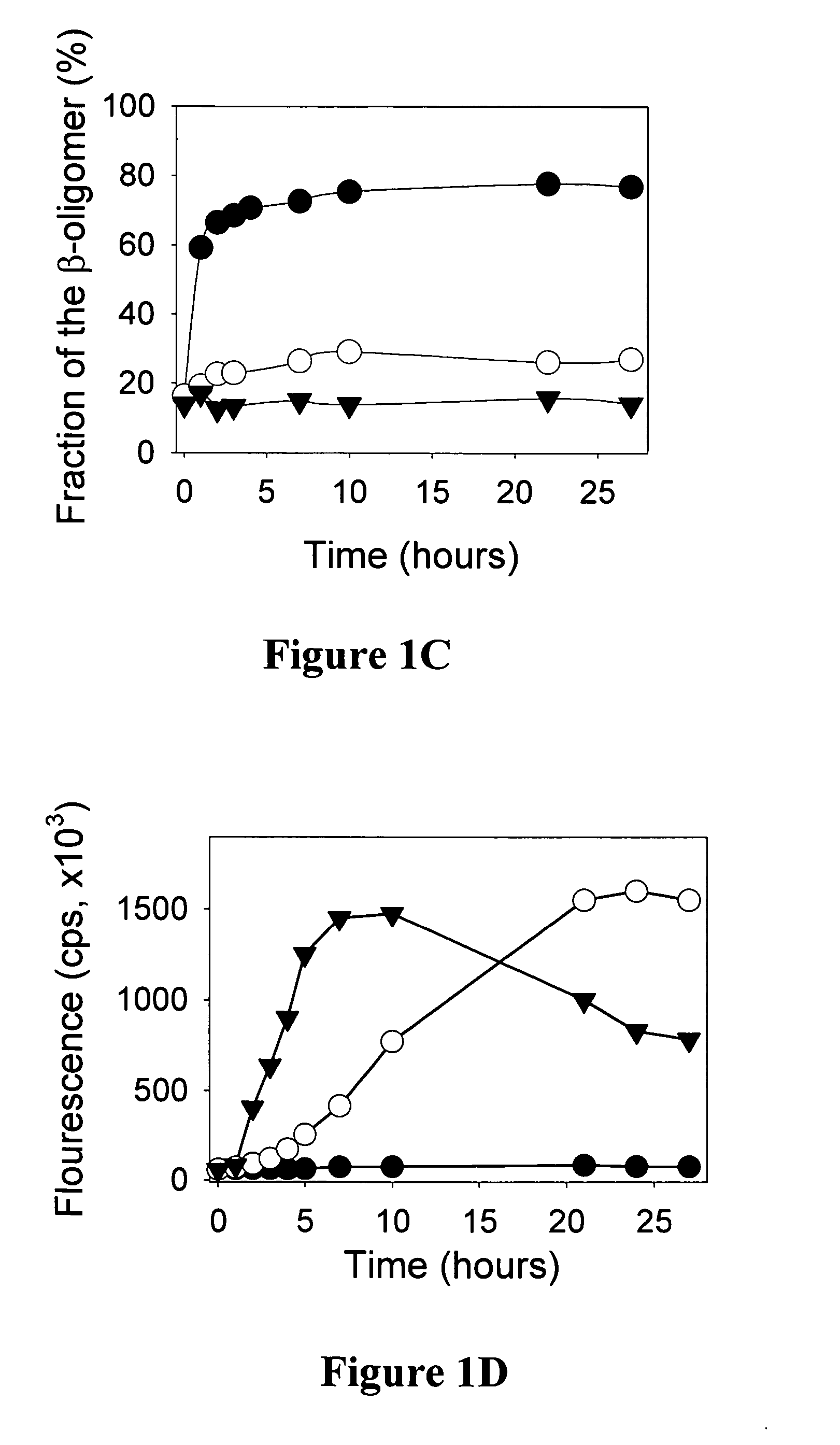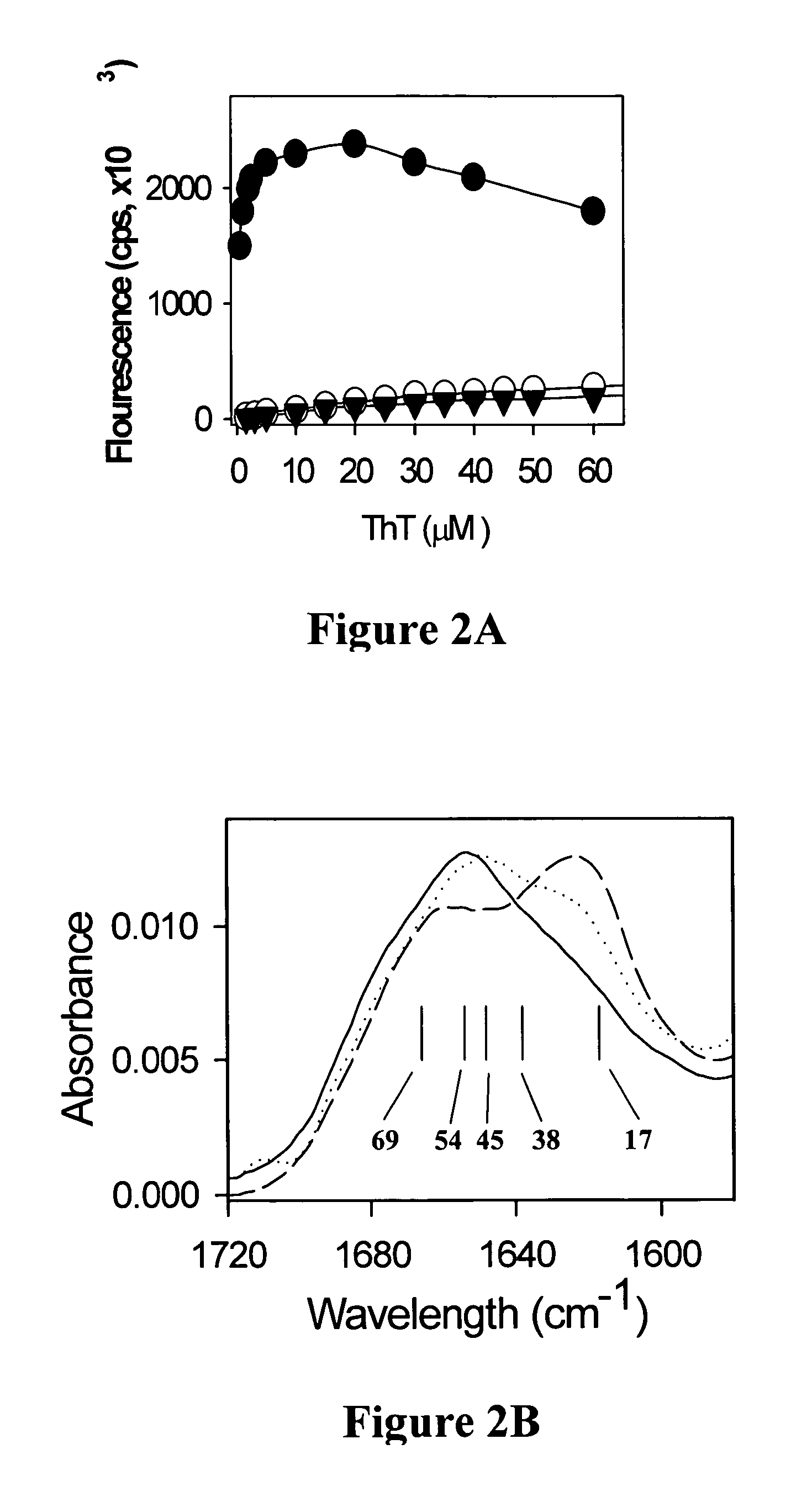Composition and method for monitoring in vitro conversion of full -length mammalian prion protein to amyloid form with physical properties of PRPsc
a technology of amyloid form and prion protein, which is applied in the field of prion proteins, can solve the problem that the oxidized full-length prp has never been converted into the amyloid form, and achieve the effect of high seeding activity
- Summary
- Abstract
- Description
- Claims
- Application Information
AI Technical Summary
Benefits of technology
Problems solved by technology
Method used
Image
Examples
examples
Material and Methods
Protein Expression and Purification.
[0063] Mouse PrP 23-231 DNA (FIG. 10) was PCR amplified from pcDNA3 plasmids containing the full length PrP gene, inserted into pET101 / D-TOPO vector (Invitrogen) and transformed into Top10 cells (Invitrogen). The transformants were tested by PCR amplification, the DNAs from the positive clones were checked by DNA sequencing and retransformed into BL21 (DE3) Star cells (Invitrogen). For expression, transformants were inoculated into 10 ml of LB / carbenicillin medium (0.1 mg / ml carbenicillin) and were grown at 37° C. for 3.5 h. The entire culture was inoculated into 100 ml of LB / carbenicillin medium and grown overnight (˜16 h). 5% of the overnight culture was inoculated into TB medium (300 ml) supplemented with carbenicillin (0.1 mg / ml) and grown at 37° C. until the A600 nm reached 0.6. Expression was induced by addition of isopropyl-β-D-thiogalactopyranoside (Sigma) to a final concentration of 1 mM and the cultures were grown...
PUM
 Login to View More
Login to View More Abstract
Description
Claims
Application Information
 Login to View More
Login to View More - R&D
- Intellectual Property
- Life Sciences
- Materials
- Tech Scout
- Unparalleled Data Quality
- Higher Quality Content
- 60% Fewer Hallucinations
Browse by: Latest US Patents, China's latest patents, Technical Efficacy Thesaurus, Application Domain, Technology Topic, Popular Technical Reports.
© 2025 PatSnap. All rights reserved.Legal|Privacy policy|Modern Slavery Act Transparency Statement|Sitemap|About US| Contact US: help@patsnap.com



